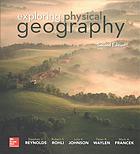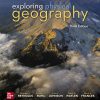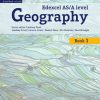Exploring physical geography 2nd Edition Reynolds – eBook PDF
$50.00 Original price was: $50.00.$35.00Current price is: $35.00.
Exploring physical geography – Ebook PDF
Exploring physical geography – Ebook PDF Instant Delivery – ISBN(s): 9781259664281,1259664287
Product details:
- ISBN-10 : 1259542432
- ISBN-13 : 978-1259542435
- Author: Stephen Reynolds , Robert Rohli , Julia Johnson , Peter Waylen , Mark Francek
Stephen Reynolds, author of the highly successful Exploring Geology, brings his ground-breaking, visually spectacular approach to Exploring Physical Geography. Intended for an introductory geography course, such as Physical Geography, Reynolds Exploring Physical Geography promotes inquiry and science as an active process. It encourages student curiosity and aims to activate existing student knowledge by posing the title of every two-page spread and every subsection as a question. In addition, questions are dispersed throughout the book. Integrated into the book are opportunities for students to observe patterns, features, and examples before the underlying concepts are explained. That is, we employ a learning-cycle approach where student exploration precedes the introduction of geographic terms and the application of knowledge to a new situation.
Exploring Physical Geography introduces terms after students have an opportunity to observe the feature or concept that is being named. This approach is consistent with several educational philosophies, including a learning cycle and just-in-time teaching. Research on learning cycles shows that students are more likely to retain a term if they already have a mental image of the thing being named (Lawson, 2003). Also, the figure-based approach in this book allows terms to be introduced in their context rather than as a definition that is detached from a visual representation of the term. We introduce new terms in italics rather than in boldface, because boldfaced terms on a textbook page cause students to immediately focus mostly on the terms, rather than build an understanding of the concepts.
Table of contents:
1. The Nature of Physical Geography
2. Atmospheric Energy and Matter
3. Atmospheric Motion
4. Atmospheric Moisture
5. Weather Systems and Severe Weather
6. Atmosphere – Ocean – Crysophere Interactions
7. World Climates
8. Water Resources
9. Understanding Landscapes
10. Plate Tectonics and Regional Features
11. Volcanoes, Deformation, and Earthquakes
12. Weathering and Mass Wasting
13. Streams and Flooding
14. Glaciers and Glacial Landforms
15. Coasts and Changing Sea Levels
16. Soils
17. Ecosystems and Biogeochemical Cycles
18. Biomes
People also search:
does geography determine development
how did physical geography affect the development of mayan society
physical geography examples in real life
an example of physical geography
what are the examples of physical geography


